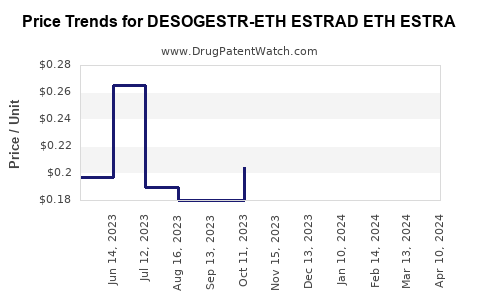Drug Price Trends for DESOGESTR-ETH ESTRAD ETH ESTRA
✉ Email this page to a colleague

Average Pharmacy Cost for DESOGESTR-ETH ESTRAD ETH ESTRA
| Drug Name | NDC | Price/Unit ($) | Unit | Date |
|---|---|---|---|---|
| DESOGESTR-ETH ESTRAD ETH ESTRA | 00378-7296-53 | 0.15631 | EACH | 2024-11-20 |
| DESOGESTR-ETH ESTRAD ETH ESTRA | 00378-7296-53 | 0.20807 | EACH | 2024-10-23 |
| DESOGESTR-ETH ESTRAD ETH ESTRA | 00378-7296-53 | 0.19599 | EACH | 2024-09-18 |
| DESOGESTR-ETH ESTRAD ETH ESTRA | 00378-7296-53 | 0.19983 | EACH | 2024-08-21 |
| DESOGESTR-ETH ESTRAD ETH ESTRA | 00378-7296-53 | 0.15764 | EACH | 2024-07-17 |
| DESOGESTR-ETH ESTRAD ETH ESTRA | 00378-7296-53 | 0.16128 | EACH | 2024-06-19 |
| >Drug Name | >NDC | >Price/Unit ($) | >Unit | >Date |


